Life Sciences Domain: AMR’s Top 5 Emerging Markets to Watch in Q1 2025

The life sciences sector has grown rapidly, driven by pharmaceutical, biotech, and healthcare companies that developed vaccines during COVID-19. Furthermore, the rising focus on R&D and the growing investments by multinational corporations in various drug discovery projects has impacted the sector positively in the first quarter of 2025. Apart from these factors, Allied Market Research, based on its in-house ‘Title Matrix Tool’, has identified five industries that have contributed to the growth and success of the landscape. This newsletter analyzes each of these markets and highlights their contribution to the expansion of the domain.
Tumor Ablation Market
Tumor ablation is a simple, low-risk procedure used to treat tumors in the lung, bone, liver, and kidney. This treatment mechanism primarily employs different energy modalities such as microwave, radiofrequency, laser therapy, or cryotherapy to eliminate tumors without any extensive surgery. The growing prevalence of cancer across the globe is expected to help the tumor ablation market gather a revenue of $7.5 billion by 2035. The industry accounted for $1.6 billion in 2023 and is projected to rise at a CAGR of 13.6% during 2024-2035. Furthermore, technological advancements in high-precision imaging modalities and innovative ablation equipment have created numerous investment opportunities in the sector in Q1 2025.
The AMR report on the tumor ablation industry divides the market into various segments based on technology, treatment, and application. The primary aim of this study is to provide an in-depth analysis of the various investment areas in the sector to aid companies in making the right business decisions. By technology, the radiofrequency ablation segment held the highest revenue share in 2023 and is predicted to continue its dominance during 2024-2035. The precision-targeting capabilities of radiofrequency ablation and the shorter recovery times associated with this technique have increased their popularity significantly in the first quarter of 2025. Additionally, innovations in medical imaging mechanisms have helped the market flourish in Q1 2025.
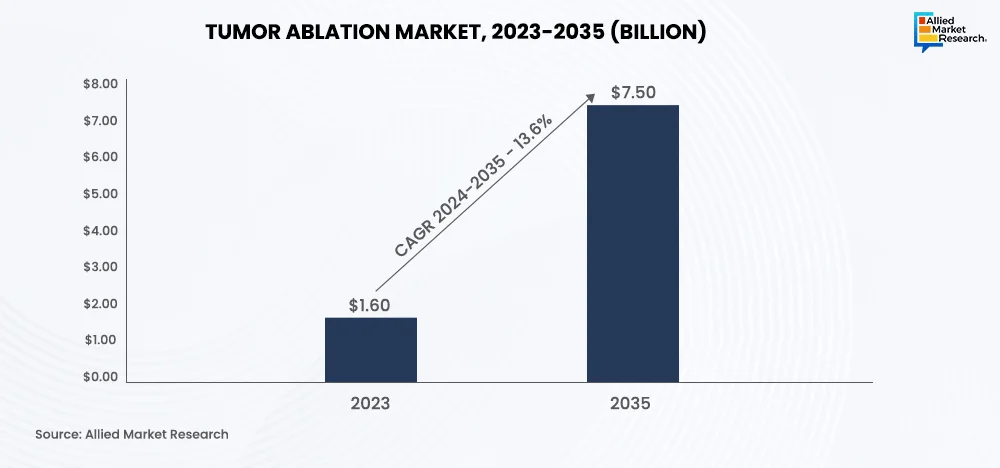
Hepatitis C Testing Market
Hepatitis C is a chronic liver disease caused by the hepatitis C virus (HCV) that results in cirrhosis and cancer if left untreated. The increase in awareness regarding the importance of regular screening, early detection, and timely treatment of the disease has boosted the revenue share of the hepatitis C testing market in the first quarter of 2025. The industry accounted for $1.5 billion in 2023 and is anticipated to gather a revenue of $2.6 billion by 2035, rising at a CAGR of 4.9% during 2024-2035. The surge in adoption of point-of-care (POC) testing has also strengthened the position of the landscape in the recent past. Along with this, innovations in molecular diagnostics are estimated to impact the market positively in the coming period.
The regional analysis offered in the AMR report states that the North America region is projected to witness a significant growth during 2024-2035. The well-developed healthcare infrastructure in various countries, especially the U.S., Canada, and Mexico, is expected to bring in profitable opportunities in the industry. At the same time, governmental initiatives and awareness campaigns have augmented the growth rate of the landscape in the first quarter of 2025.
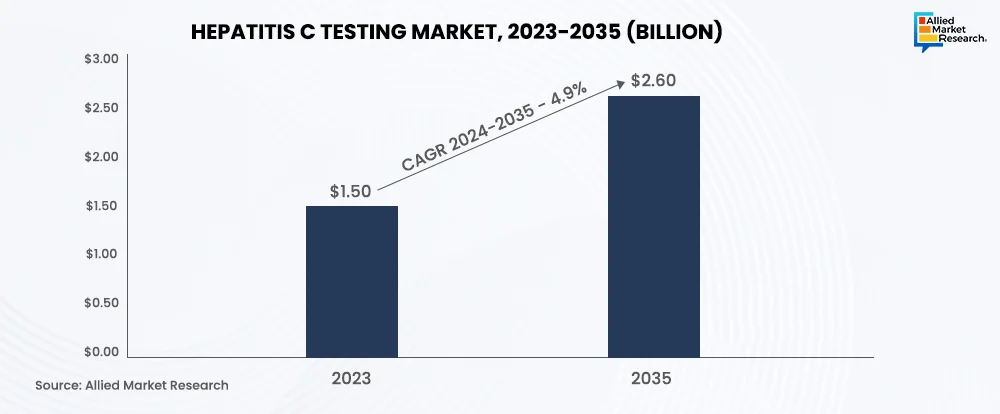
Endoscopic Spinal Surgery Market
Endoscopic spinal surgery is a minimally invasive medical procedure used to treat different spinal conditions such as degenerative disc disease, spinal stenosis, and herniated discs. The emergence of innovative mechanisms such as robotic-assisted surgery and improvements in endoscopic instruments is expected to help the endoscopic spinal surgery market gather a revenue share of $1612.87 million by 2035. The industry was valued at $690.3 million in 2023 and is anticipated to rise at a CAGR of 7.3% during 2024-2035. The growing proportion of the geriatric population across the world has played an important role in the growth of the landscape in the first quarter of 2025.
The AMR study provides an in-depth segmental analysis of the endoscopic spinal surgery market to enable companies to formulate their expansion strategies accordingly. The report classifies the industry into different segments based on product type, end-user, and procedure type. By product type, the endoscopic devices segment accounted for the largest revenue share and is estimated to dominate the market in the near future. The rising complexity of medical surgeries and the growth in demand for minimally invasive procedures have brought in numerous investment opportunities in the industry during Q1 2025.
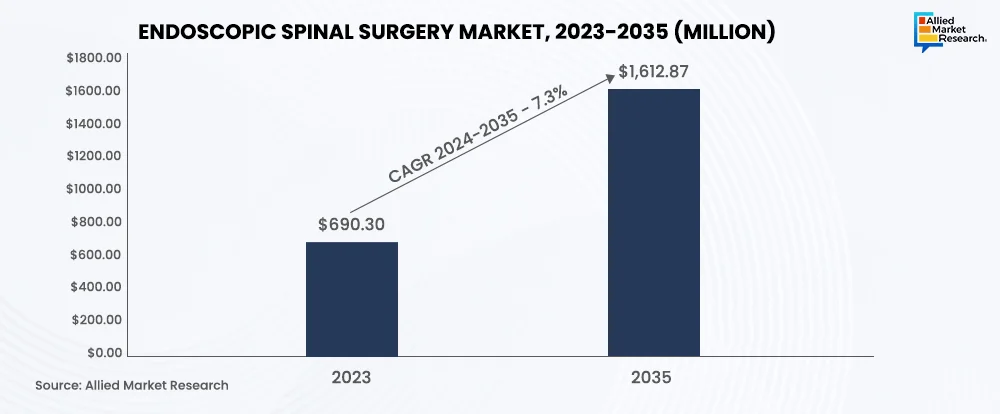
Hormonal Contraceptives Market
Hormonal contraceptives are birth control mechanisms that use synthetic hormones to prevent pregnancy. These techniques include uterine lining alteration, suppressing ovulation, and thickening cervical mucus. As per a survey conducted by the National Library of Medicine, around 80% of sexually active women in the US use hormonal contraceptives in their reproductive age. The high adoption of such innovative birth control methods is expected to help the hormonal contraceptive industry rise at a CAGR of 3.6% during 2024-2035. The industry accounted for $17.3 billion in 2023 and is estimated to reach $26.6 billion by 2035.
The AMR report offers a detailed analysis of the competitive scenario of the industry based on scientific analytical tools such as Porter’s five forces to assist new industry participants in understanding the operations of multinational giants easily. Additionally, the study highlights that the rising awareness regarding the importance of family planning and the various government initiatives that support women's and adolescent girls' reproductive rights have contributed to the expansion of the industry in the first quarter of 2025. Many companies have even launched educational campaigns and programs to increase the acceptance among people regarding the use of hormonal contraceptives, thus boosting the revenue share of the landscape.
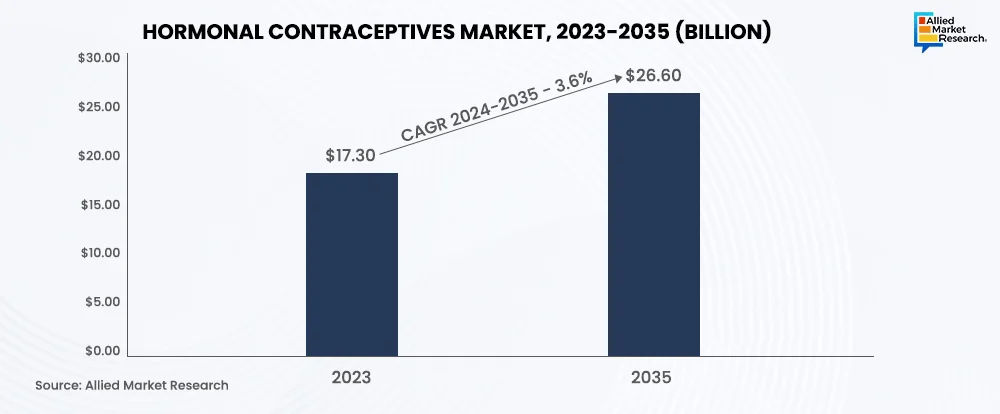
Cannabinoid Based Drug Discovery and Development Market
The AMR report on the cannabinoid based drug discovery and development market highlights that the industry accounted for $1.3 billion in 2024 and is estimated to gather a sum of $1.8 billion by 2034, growing at a CAGR of 3.3% during 2025-2034. Large investments in cannabis research are expected to boost the sectoral growth in the coming period. Additionally, the rising prevalence of chronic disorders such as cancer, multiple sclerosis, and epilepsy has opened new avenues for the expansion of the industry. Furthermore, the increasing adoption of advanced screening mechanisms and high-throughput techniques has improved the revenue share of the market in Q1 2025.
The report provides a comprehensive analysis of the performance of the industry in various regions across the globe, including North America, LAMEA, Europe, and Asia-Pacific. The various demographic, administrative, socioeconomic, cultural, and political factors impacting the cannabinoid based drug discovery and development market are studied as part of this exercise. As per the report, the North America region held the largest revenue share and is expected to continue its dominance in the near future. Supportive government rules in the US and Canada have become the major factor behind the growth of the industry in Q1 2025.
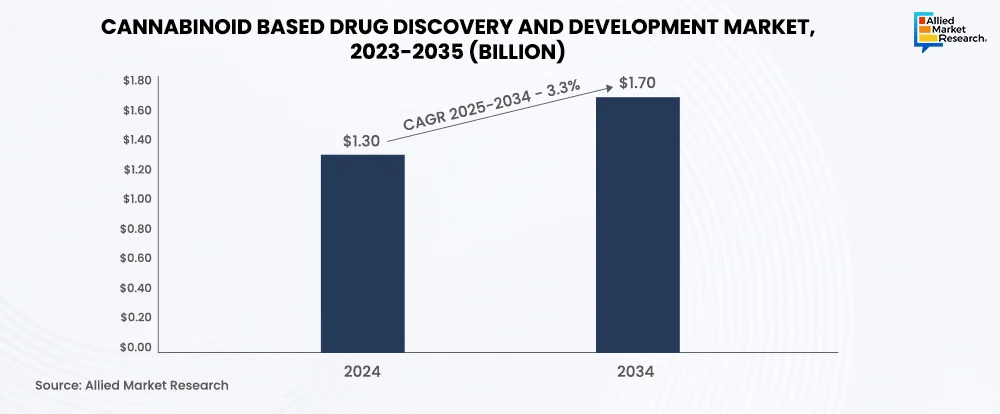
The final word
The newsletter on the top 5 emerging markets in the life sciences domain for Q1 2025 highlights the evolving dynamics of the sector. Allied Market Research has published extensive reports on each of these industries, thereby providing companies actionable data and market intelligence on the major factors driving the landscape of life sciences.
Stay in touch with our analysts for a comprehensive analysis of the leading growth drivers and investment opportunities in the life sciences domain!



